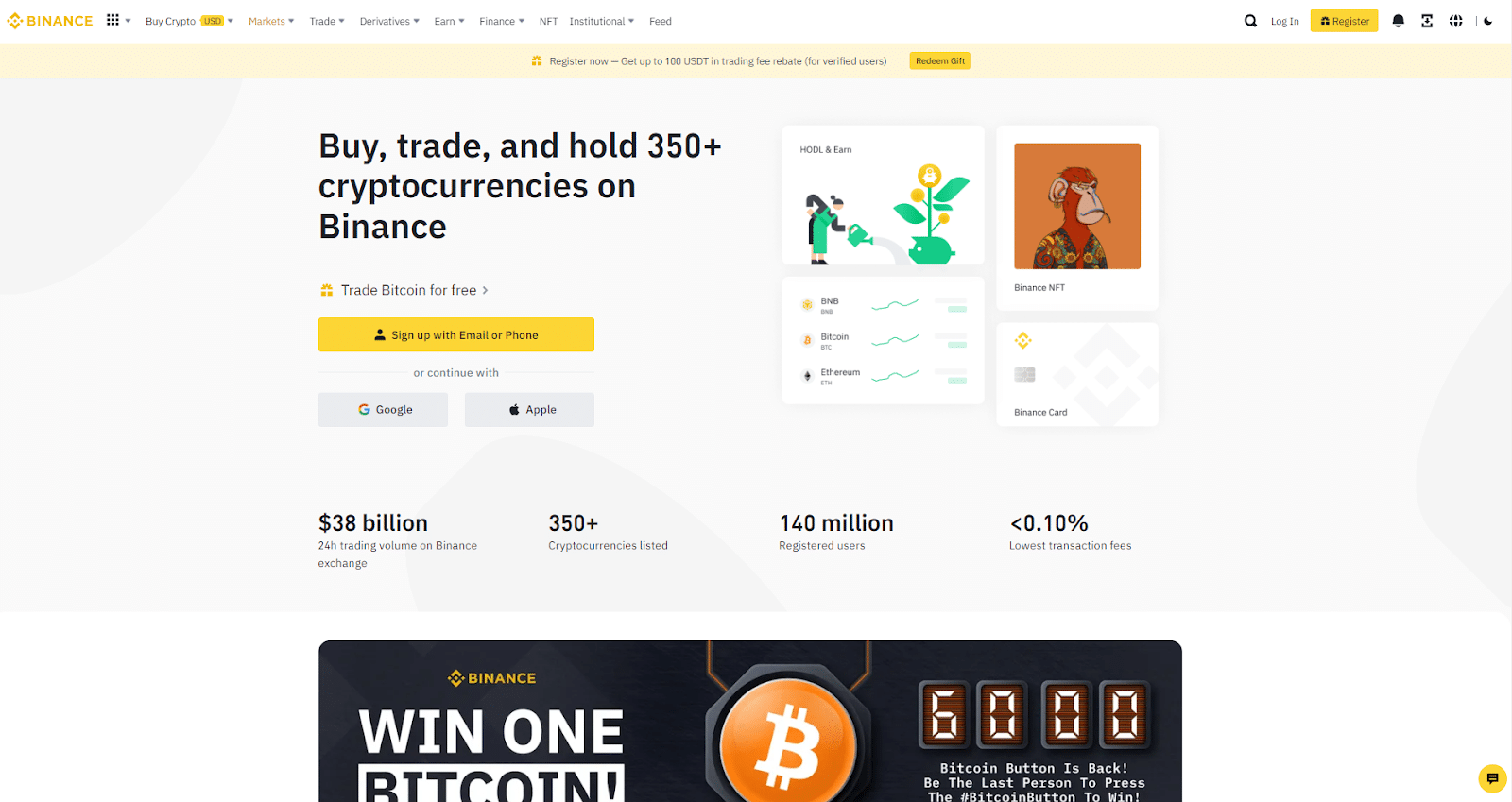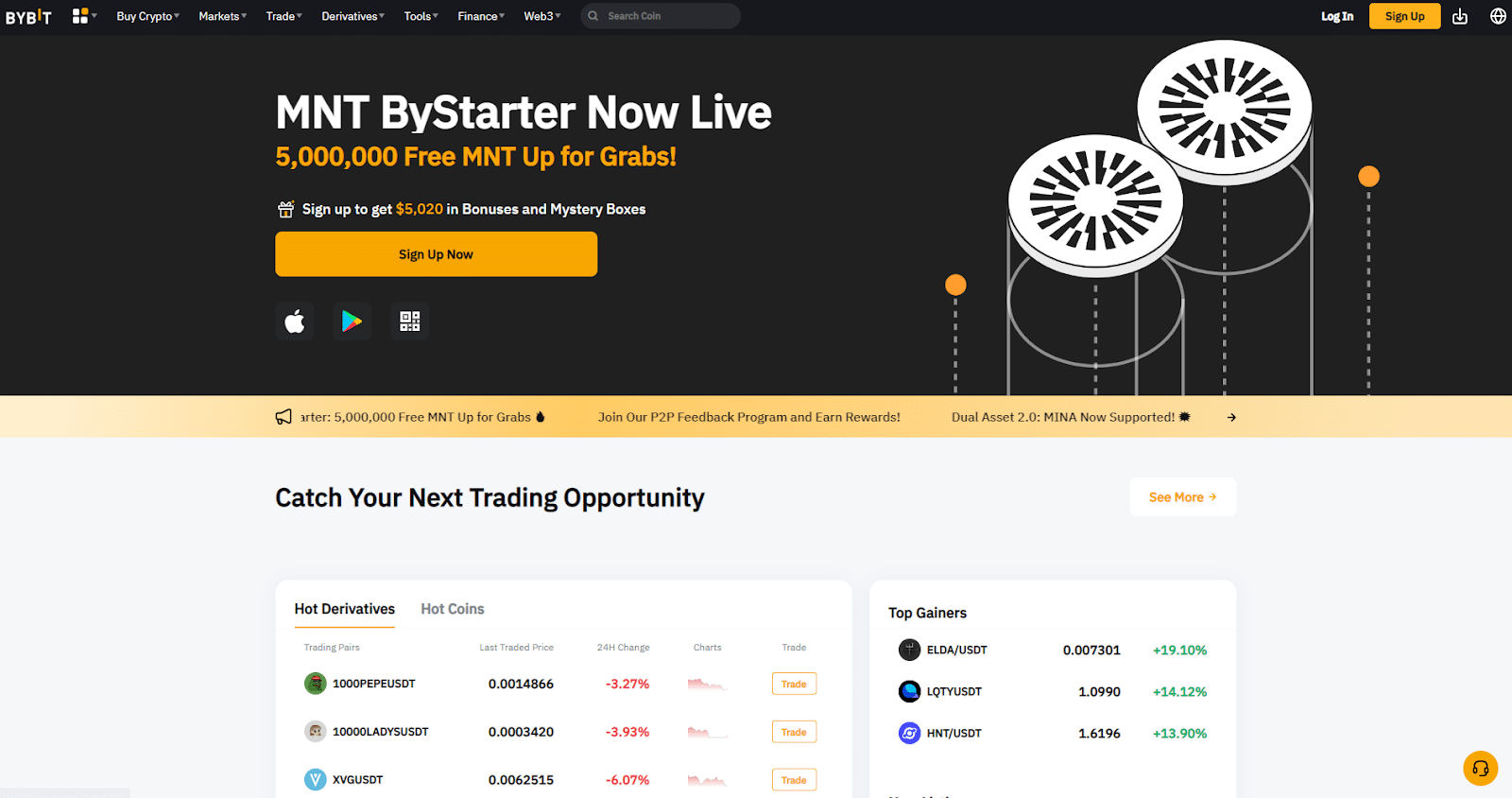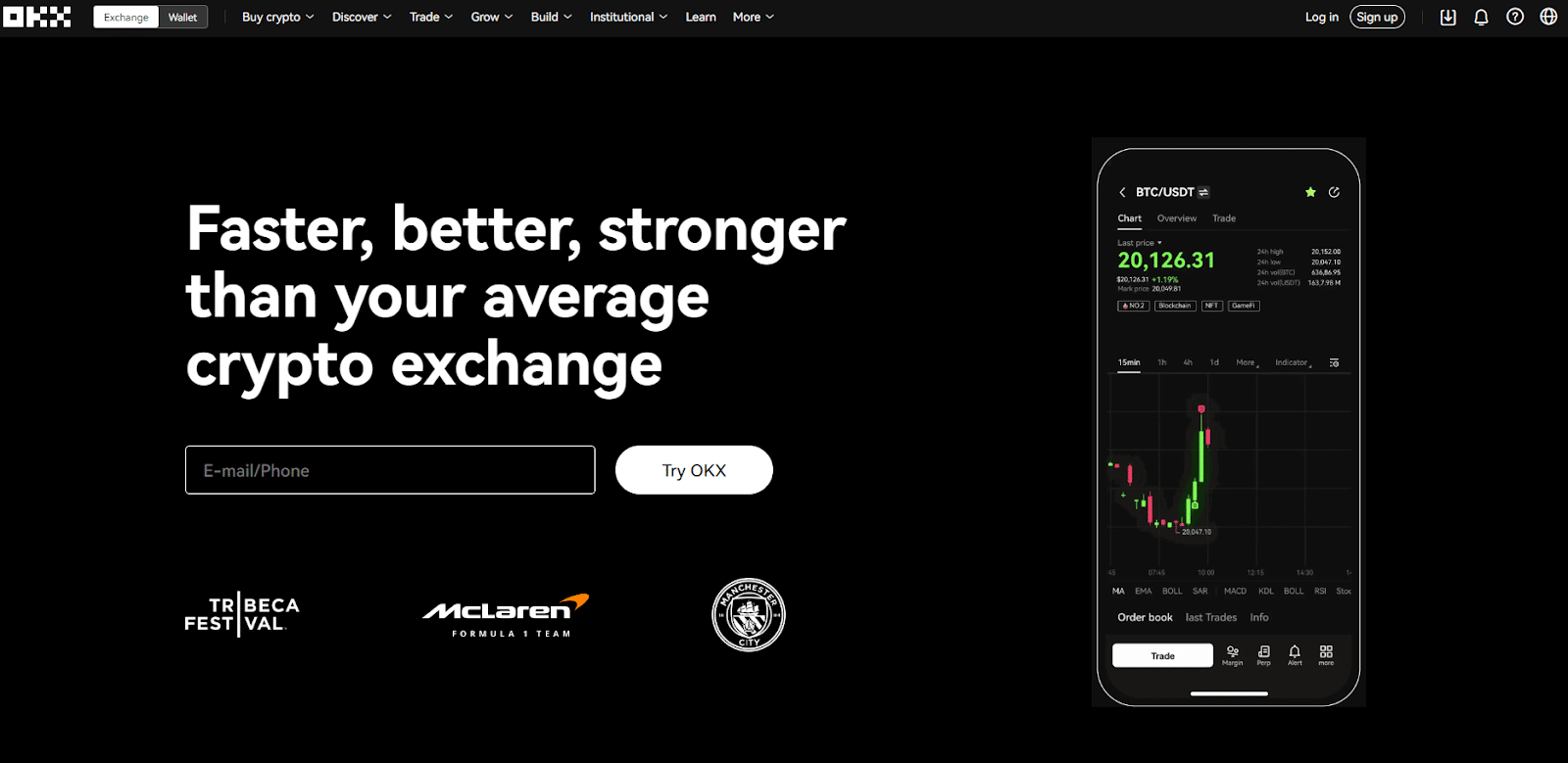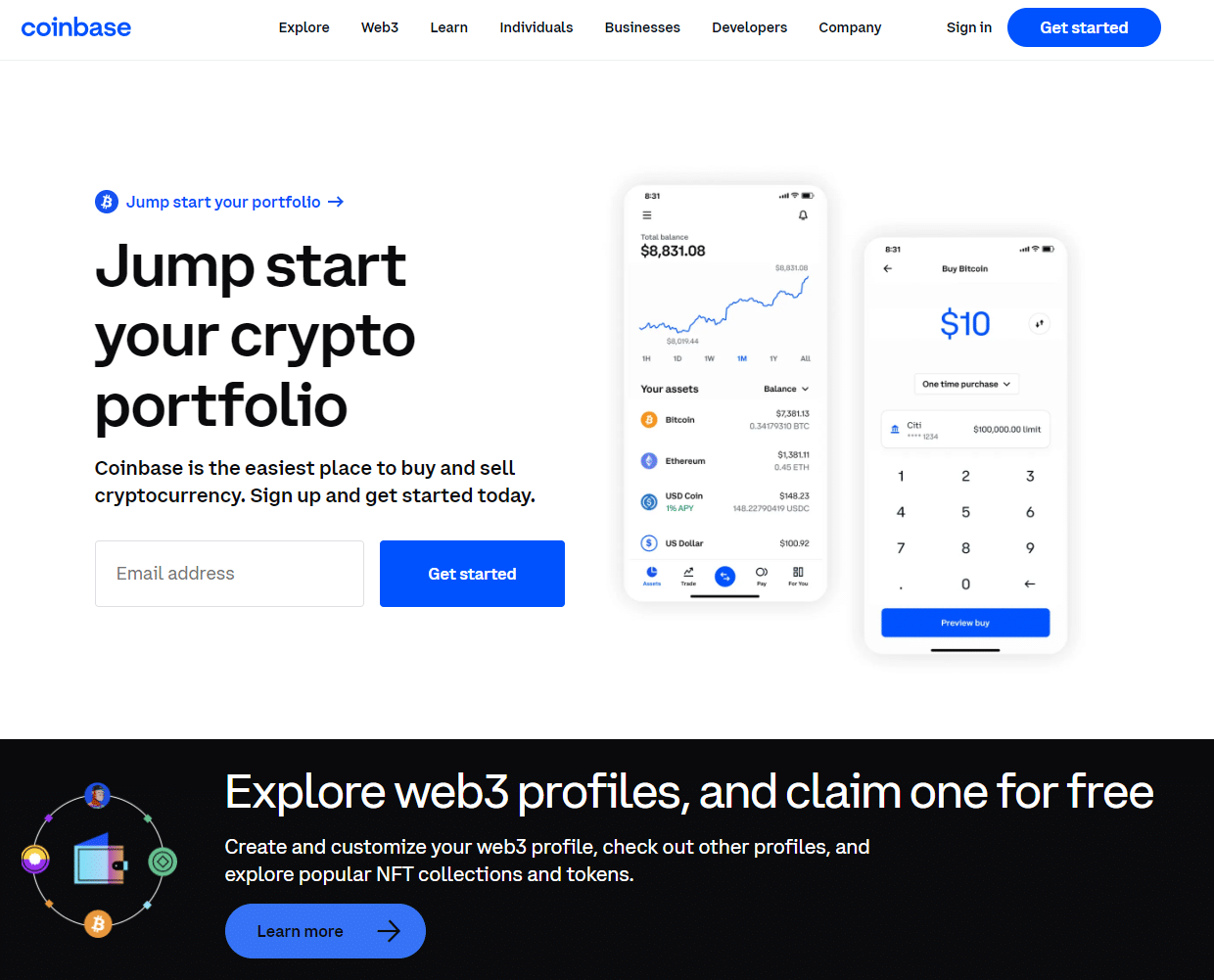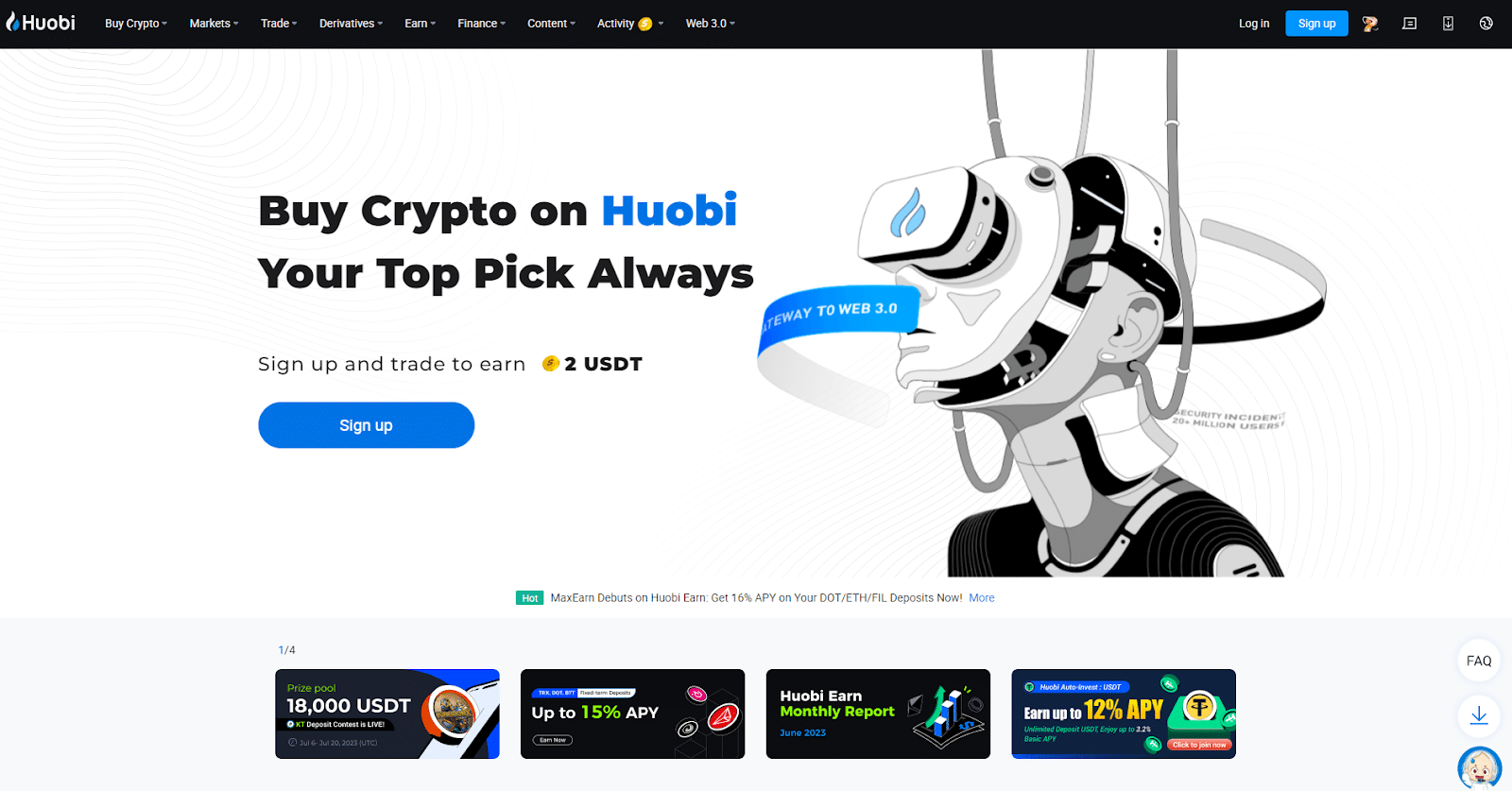In the world of cryptocurrencies, crypto exchanges play a crucial role as platforms that enable users to buy, sell, and trade digital assets. As the popularity of cryptocurrencies grew, so did the number of exchanges, each offering unique features and services tailored to different user needs.
One key metric used to assess the significance of a crypto exchange is its trading volume. It is a valuable indicator of an exchange’s liquidity, popularity, and activity. Higher trading volumes generally indicate a more active and liquid market, attracting traders and investors.
In this article, we will explore the largest crypto exchanges based on their trading volume. By examining the ranking of these exchanges, we can gain valuable insights into their market presence and overall significance.
Largest crypto exchanges
Here’s the list of the biggest crypto exchanges by spot trading volume in billion USD:
*Binance US numbers are excluded
Source: TheBlock.co
The top 5 crypto exchanges, ranked by trading volume, include Binance, Bybit, OKX, Upbit, and Coinbase. Binance takes the lead with an impressive share of over 36% of the global market share in October 2024. Bybit and OKX, formerly known as OKEx, rank second and third in trading volume, respectively. Upbit ranks fourth and Coinbase, trading under the ticker symbol COIN on the Nasdaq exchange, holds the fifth spot.
While most major exchanges showed slower growth after the 2021 crypto boom, the resurgence of trading volumes in 2024 highlights renewed investor interest and confidence in the cryptocurrency market. This renewed activity has been driven by Bitcoin reaching a new all-time high above the $98k mark, the approval of Bitcoin spot ETFs by major financial institutions like BlackRock, and a wave of institutional and retail investment.
Largest crypto exchanges (spot and derivatives)
The trading volume of several exchanges experiences a significant increase when derivatives trading are included in the calculation. The following table shows the combined spot and derivatives trading volumes in billion USD of the largest cryptocurrency exchanges:
| Crypto Exchange | 1 Year Trading Volume* | Trading Volume 2024 | 24h Avg Trading Vol (2024) |
| Binance | 24,213 | 26,137 | 71.61 |
| OKX | 9,585 | 10,928 | 29.94 |
| Bybit | 7,001 | 8,122 | 22.25 |
| Bitget | 6,515 | 7,010 | 19.21 |
| Gate.io | 1,511 | 1,600 | 4.38 |
| Coinbase | 964 | 1,050 | 2.88 |
| Upbit | 926 | 1,005 | 2.75 |
| Huobi | 982 | 1,010 | 2.77 |
| Crypto.com | 1,871 | 1,325 | 3.63 |
*As of May 20, 2025
Source: Tokeninsight.com
Binance
- Binance trading volume (24h in H1-2024): $20.60 Billion
- Binance spot and derivatives trading volume (24h in H1-2024): $71.80 Billion
Binance, the world’s largest cryptocurrency exchange, stands out as a dominant force in the market with its remarkable trading volumes. With an average daily volume of over $20.60 billion and a total spot volume exceeding $3.7 trillion in 2023, Binance outperforms its competitors by a substantial margin. Furthermore, Binance’s daily trading volume surpasses $71.80 billion when incorporating derivatives trading.
A key factor in Binance’s success is the large number of available cryptocurrencies and trading pairs. However, providing so many options makes it challenging to thoroughly vet each cryptocurrency listing for legitimate users, which could expose Binance to greater risks if unsavoury projects are listed.
In addition to its scale, Binance entices users with competitive fees, robust trading tools, and a strong emphasis on security. Users benefit from lower trading fees through Binance’s native exchange token, BNB Coin. Holders of BNB tokens enjoy discounts of up to 25%, making trading on the platform more cost-effective.
Despite its impressive features, Binance has faced criticism and scrutiny. The wide range of listed coins exposes the exchange to potential risks associated with unsavoury projects. Additionally, Binance’s dominance in the industry has attracted regulatory attention, leading to calls for tighter oversight.
Bybit
- Bybit trading volume (24h in H1-2024): $4.08 Billion
- Bybit spot and derivatives trading volume (24h in H1-2024): $20.93 Billion
Founded in 2018, Bybit was initially launched as a derivatives platform, exclusively catering to this segment. However, in 2021, the introduction of the Bybit spot market expanded its offerings to include spot trading services. Bybit now ranks as the second-largest exchange by trading volume, processing over $4.08 billion in daily spot trades, and when derivatives transactions are included, its average daily trading volume exceeds $20 billion.
The Bybit spot market serves as one of the main services provided by the platform, enabling users to engage in crypto-crypto trading. The platform offers more than 500 assets to facilitate a diverse range of trading pairs. In total, Bybit supports over 600 trading pairs, providing users with ample options to explore.
Bybit’s user interface caters to derivatives traders, offering a comprehensive suite of order types, indicators, tools, and analytics. Bybit distinguishes itself through its lightning-fast execution speeds, tight spreads, and generous trading incentives. The platform consistently offers some of the lowest fees in the derivatives space and frequently introduces zero-fee promotional programs for new users. Bybit also offers three types of customer accounts – non-VIP, VIP, and Pro (Bybit Loyalty), catering to the varying needs and preferences of its user base.
OKX
- OKX trading volume (24h in H1-2024): $3.25 Billion
- OKX spot and derivatives trading volume (24h in H1-2024): $27.28 Billion
OKX, formerly known as OKEx, has established itself as one of the world’s largest crypto derivatives trading platforms. Despite its name change in 2021, OKX maintains the third-largest exchange by trading volume, processing around $3.25 billion daily trades. Notably, when considering both spot and derivatives trading volumes, OKX even secures the second spot among the top crypto exchanges.
OKX attracts users through its vast range of derivative products, with over 290 tradable cryptocurrencies and 600 active markets. OKX offers futures and options contracts for top coins like Bitcoin and Ethereum, DeFi tokens, and alternative blockchains. This gives traders extensive tools for hedging and speculating through leveraged positions.
OKX also features some of the industry’s most competitive and transparent fee structures, with a simple tier-pricing fee schedule for maker and taker fees. For instance, for spot trading, OKX offers maker fees ranging from -0.005% to 0.080%, depending on the 30-day trading volume, while taker fees range from 0.015% to 0.10%. This volume-based fee approach has proven to be a major attraction for larger traders and institutional investors, making OKX a preferred platform for their trading needs.
OKX has an intuitive exchange interface that aims to be user-friendly for beginners and advanced traders. The platform’s web and app interfaces share similar layouts and functionalities. Charts for individual coins include multiple technical indicators and drawing tools to help traders identify trends and formulate strategies, while advanced traders can create customised workspaces with multiple windows for order placement, charting and market data.
Upbit
- Upbit trading volume (24h in H1-2024): $3.15 Billion
- Upbit does not offer derivatives trading
South Korean crypto exchange Upbit ranks as the second largest exchange by trading volume, mostly dominating the Asian market. Upbit currently processes around $3.15 billion in average daily volume, despite offering fewer crypto assets than Binance and needing access to derivatives trading.
Upbit’s success stems largely from its popularity in South Korea, one of the world’s most crypto-enthusiastic populations. Additionally, South Korean regulators have taken a balanced approach toward crypto compared to other countries, enabling Upbit to grow within a mainstream, compliant framework. This has helped bolster user trust and liquidity on the platform.
Unique features like its Upbit Stake product and Ethereum ecosystem offerings have fueled its rapid growth. Upbit Stake allows users to earn passive income by supplying cryptocurrency liquidity to the exchange. Users receive interest payments in UST, KRW or BTC based on their coin stakes.
However, Upbit has faced challenges around security. In 2019, hackers stole over $50 million of cryptocurrency from Upbit’s hot wallets. The exchange later completed reimbursing affected users, regaining some trust.
Coinbase
- Coinbase trading volume (24h in H1-2024): $2.88 Billion
- Coinbase does not offer derivatives trading
Coinbase, the largest publicly traded cryptocurrency exchange, holds the fifth position in terms of trading volume. It is listed on the Nasdaq stock exchange under the ticker COIN, processes approximately $2.88 billion in average daily volume and is currently available in more than 100 countries.
Coinbase stands out for its user-friendly platforms that cater to different trading preferences and needs. The main Coinbase exchange offers a simple layout, ensuring users can easily navigate and trade cryptocurrencies. It offers the Coinbase Wallet for users looking for a more interactive and non-custodial experience, and Advanced Trade, another platform which targets advanced traders who require real-time order books and advanced trading options.
Spot trading is the primary service provided by Coinbase, with margin trading currently unavailable. Coinbase employs the maker-taker fee model, which includes a tiered fee structure based on trading volume over the trailing 30-day period. The fee tier is determined when placing an order rather than upon completion.
Gate.io
- Gate.io trading volume (24h in H1-2024): $2.30 Billion
- Gate.io spot and derivatives trading volume (24h in H1-2024): $4.17 Billion
Gate.io has rapidly emerged as one of the largest crypto exchanges by trading volume, currently ranking 6th with around $2.3 billion in daily trades and over $4.1 billion, including derivatives trading. Gate.io is a centralised cryptocurrency exchange (CEX).
Gate.io is renowned for its user-friendly platform, offering features such as spot trading, margin trading, perpetual contracts, and quantitative trading tools. The exchange provides users with access to over 3,000 cryptocurrencies and tokens, catering to both retail and institutional traders. Additionally, Gate.io offers Launchpad projects and early access to new tokens, making it a popular choice for investors seeking emerging opportunities.
Gate.io has also prioritized security, implementing measures like two-factor authentication (2FA), cold wallet storage, and a dedicated security fund to protect user assets. However, like many exchanges, Gate.io faces challenges in navigating the evolving regulatory environment, which may affect its global operations and services.
Huobi
- Huobi trading volume (24h in H1-2024): $2.19 Billion
- Huobi spot and derivatives trading volume (24h in H1-2024): $2.77 Billion
Huobi Global is also one of the largest crypto exchanges that hold a significant market share in Asian markets. It was founded in 2013 in Beijing and offers a comprehensive digital asset ecosystem that includes various services such as spot trading, derivatives trading, staking, crypto loans, crypto yield products, and additional offerings. Huobi’s average daily trading volume is around $2.19 billion per day. However, Huobi stands out for its dominance in the crypto derivatives market, especially in Asia, with an average daily spot and derivatives trading volume of over $2.77 billion.
Huobi Global allows users to trade a diverse selection of over 700 cryptocurrencies on its exchange. The trading fees on the Huobi Global spot market follow a tiered structure, with varying rates for regular and Pro users.
There have been accusations of wash trading against Huobi, raising concerns about the authenticity of its reported trading volumes. Additionally, Huobi faces restrictions on its ability to provide services in certain jurisdictions.
Bitget
- Bitget trading volume (24h in H1-2024): $1.83 Billion
- Bitget spot and derivatives trading volume (24h in H1-2024): $18.03 Billion
Bitget, a leading cryptocurrency exchange founded in 2018, has quickly gained recognition for its robust derivatives trading platform. With an average daily trading volume of $1.8 billion in spot markets and over $18 billion when derivatives are included, Bitget stands out as a major player in the crypto trading ecosystem.
Bitget stands out as the largest crypto copy trading platform, trusted by over 45 million users worldwide. It offers a comprehensive suite of services, including copy trading, futures trading with more than 200 coins, and spot trading with over 800 tokens.
The platform offer its users the ability to explore new opportunities through its Launchpad, which provides early access to promising crypto projects. Bitget also supports leverage of up to 125x on certain pairs, making it suitable for both beginners and seasoned investors. Its flagship feature, copy trading, allows users to replicate the strategies of top traders, creating mutual benefits for both followers and copied traders.
Crypto.com
- Crypto.com trading volume (24h in H1-2024): $1.30 Billion
- Crypto.com spot and derivatives trading volume (24h in H1-2024): $2.55Billion
Crypto.com concludes our list of the world’s largest crypto exchanges, with an average daily trading volume of approximately $1.3 billion. Established in 2016 in Hong Kong, Crypto.com has developed a distinct identity with its app-first approach and comprehensive financial services ecosystem built around its native CRO coin. The exchange offers two types of trading fees: regular and VIP, with five levels for regular fees, following the maker-taker model.
While the Crypto.com App primarily serves as a crypto wallet and debit card platform, it also integrates a fully functional exchange. Users can conveniently engage in spot trading for more than 250 cryptocurrencies directly within the user-friendly interface of the Crypto.com App, designed to provide optimal mobile usability.
In November 2022, Crypto.com faced a challenging period when it froze withdrawals and imposed limitations on card spending due to rumours of potential exposure to FTX. This incident significantly impacted user trust and led to a substantial decline in the price of CRO, depreciating it by over 80%.
Moreover, Crypto.com faced criticism for its excessive spending on sports sponsorships while reducing earning rates for retail users. As a response, the exchange is now committed to restoring its credibility through measures focused on austerity and risk reduction.
Importance of trading volume when considering a crypto exchange
Trading volume is crucial in the cryptocurrency market, serving as a key indicator of liquidity and market activity. It provides valuable insights into the buying and selling activity level for a particular cryptocurrency or exchange during a given period.
When trading volume is high, it signifies a vibrant and dynamic market with significant buying and selling pressure. This level of market activity can create opportunities for traders to enter or exit positions more easily, enabling them to capitalise on price movements. Additionally, traders can execute their orders quickly and at desired prices, minimising slippage and transaction costs.
Conclusion
To sum up, trading volume is a key metric in determining the largest crypto exchanges. These exchanges substantially impact the cryptocurrency market, influencing price movements, market trends, and investor sentiment. Binance is the largest crypto exchange globally, followed by Bybit, OKX, Upbit, and Coinbase.
While the largest crypto exchanges enjoy substantial market dominance, they face various challenges. Regulatory issues present a significant concern as authorities worldwide strive to establish comprehensive frameworks to govern the cryptocurrency industry. The evolving regulatory landscape may impact these exchanges’ operations and compliance requirements, potentially leading to changes in their business models or geographical restrictions.
